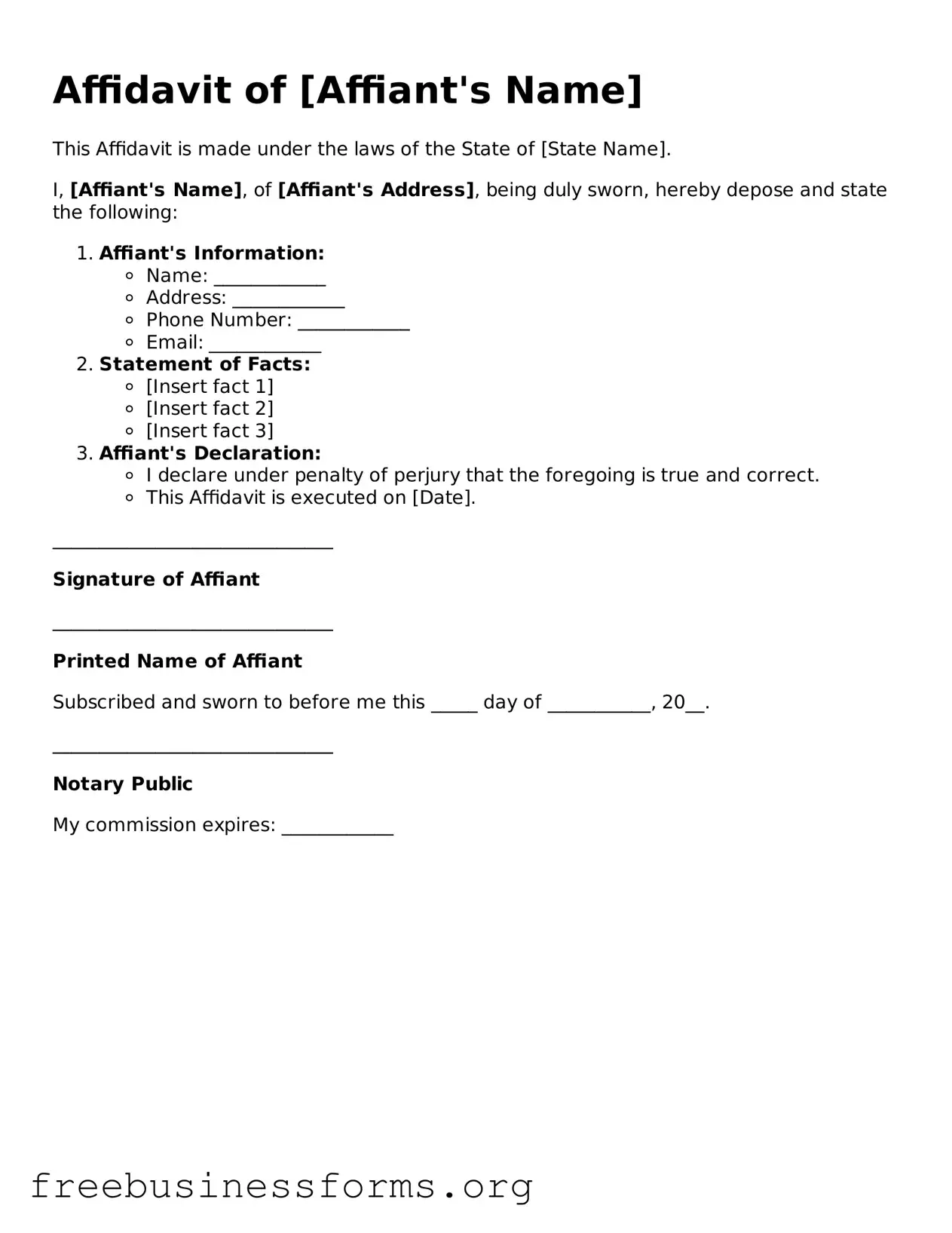Official Affidavit Form
An affidavit is a written statement made under oath, used as evidence in legal proceedings. This document serves to affirm the truth of the information contained within it, providing a reliable account for courts and other legal entities. Understanding the purpose and requirements of an affidavit is essential for those involved in legal matters.
Open Form Here
